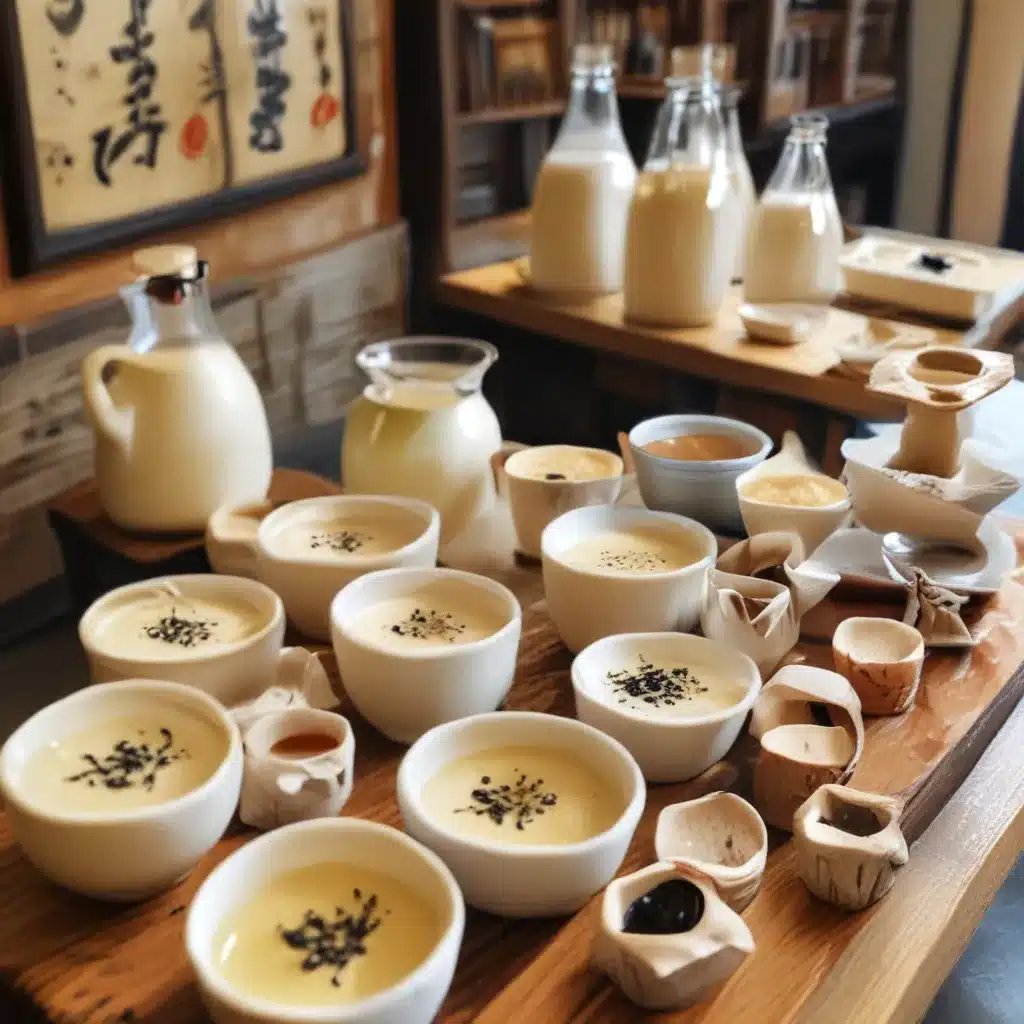
A Love Affair with Korea’s Oldest Fermented Beverage
I’ll never forget the moment I first tasted makgeolli. It was love at first sip. I was wandering through the bustling Gwangjang Market in Seoul, when the aroma of savory mung bean pancakes led me to a humble food stall. As I eagerly dug into the crispy, golden fritters, the stall owner insisted I try their house-made makgeolli to wash it down.
I had lived in Asia for 15 years, but somehow this traditional Korean rice wine had eluded me. As the milky-white liquid hit my lips, I was immediately captivated by its soft, slightly sweet flavor, with underlying notes of funky bread dough and a hint of pungency. It was the perfect pairing for the salty, savory pancakes. I was hooked.
For the rest of my time in Seoul, I made it my mission to seek out the best makgeolli bars and sample as many varieties as possible. From the trendiest spots in Gangnam to no-frills neighborhood joints, I discovered that this ancient Korean libation was experiencing a remarkable revival.
The Rise, Fall, and Resurgence of Makgeolli
Makgeolli is often referred to as “rice wine,” but its alcohol content (typically 6-11%) and production process more closely resemble that of beer. The key ingredient is nuruk, a fermentation starter that contains lactic acid bacteria and yeast, which gives makgeolli its distinctive flavor profile.
Traditionally, makgeolli was the most consumed liquor in South Korea until the 1980s, when imports of foreign alcohol and a wider variety of domestic beverages began to take over the market. As consumption declined, many small local breweries shuttered, and the quality of makgeolli plummeted, earning it a reputation as a cheap, low-quality drink for the elderly and working class.
However, in the late 2000s, something remarkable happened. Korean consumers began to rediscover their traditional liquors, driven by factors like increased domestic rice production and government promotion of rice-based products. Suddenly, high-quality, artisanal makgeolli was in demand, with prices to match those of wine and sake.
The Makgeolli Explosion
The makgeolli renaissance has continued to gather steam, fueled by the global popularity of Korean culture. The “Korean Wave” of K-pop, K-dramas, and Korean cuisine has inspired a fascination with all things Korean, including traditional beverages like makgeolli.
Today, the makgeolli scene in Seoul is thriving. Across the city, you’ll find trendy bars and restaurants serving up an incredible array of styles and flavors. From the sparkling, Champagne-like varieties at Boksoondoga to the thick, sour, and pungent house-made makgeolli at Michelin-starred restaurants, there’s something to suit every palate.
Bartenders are incorporating makgeolli into innovative cocktails, while small-batch breweries are experimenting with unique ingredients like strawberries, grapefruit, and even red rice. The days of makgeolli being seen as a cheap, low-quality drink are long gone.
Discovering the Joys of Unpasteurized Makgeolli
One of the highlights of my makgeolli journey was visiting Hangang, a brewery located near the banks of the Han River in Seoul. Here, they adhere to a strict, all-natural approach, using only newly harvested Chuchung rice grown within the city limits and relying on the fermentation process to provide the sweetness, rather than any additives or artificial sweeteners.
The result is a lusciously smooth, milky-white makgeolli that’s bursting with flavor. And because it’s unpasteurized, the live cultures and limited shelf life (around a month) mean that it can be difficult to find outside of Korea.
When I returned home to London, I was determined to continue my romance with makgeolli. I was thrilled to discover that a bartender in Islington, Taeyeol Kim, was making his own range of natural, small-batch makgeolli at a brewery in Bethnal Green. Suddenly, my makgeolli love affair was no longer a long-distance one.
Makgeolli: A Fermented Beverage Revival
As I’ve delved deeper into the world of makgeolli, I’ve been struck by the parallels between its recent resurgence and the craft beer movement that swept through the West a decade ago. Just like craft beer, makgeolli is experiencing a renaissance driven by a renewed appreciation for traditional production methods, natural ingredients, and experimentation with unique flavors.
Makgeolli bars are popping up all over Seoul, catering to a hip, young crowd eager to explore the depths of this ancient Korean libation. And much like the craft beer scene, the makgeolli community is brimming with passion, innovation, and a deep respect for tradition.
Whether you’re sipping a glass of bubbly, pink-hued makgeolli at a trendy Gangnam bar or enjoying a bowl of the thick, sour stuff alongside a traditional Korean meal, one thing is clear: makgeolli is no longer a drink for the old and the poor, but a vibrant, dynamic part of Seoul’s culinary and cultural landscape.
Discovering the Breadth of Korea’s Fermented Beverage Traditions
As I’ve learned more about makgeolli, I’ve also been struck by the rich diversity of traditional fermented beverages found across Asia. From the sake of Japan to the countless rice-based liquors of China, Vietnam, Thailand, and beyond, the sheer variety of these ancient, time-honored libations is truly awe-inspiring.
It’s a testament to the ingenuity and resourcefulness of Asian cultures, who have long harnessed the power of fermentation to create unique and flavorful alcoholic beverages. And as makgeolli’s global popularity continues to grow, perhaps it will inspire a renewed interest in these other forgotten or overlooked fermented traditions.
Ultimately, my journey with makgeolli has been a deeply personal one, a love affair that has led me on a fascinating exploration of Korean culture, history, and culinary traditions. And as I sip my glass of Hangang’s silky-smooth, unpasteurized makgeolli, I can’t help but feel a sense of wonder and gratitude for having discovered this remarkable, ancient drink.
So the next time you find yourself in Seoul, I highly recommend stepping away from the bustling streets and immersing yourself in the vibrant world of makgeolli. Who knows, you might just fall in love too.

